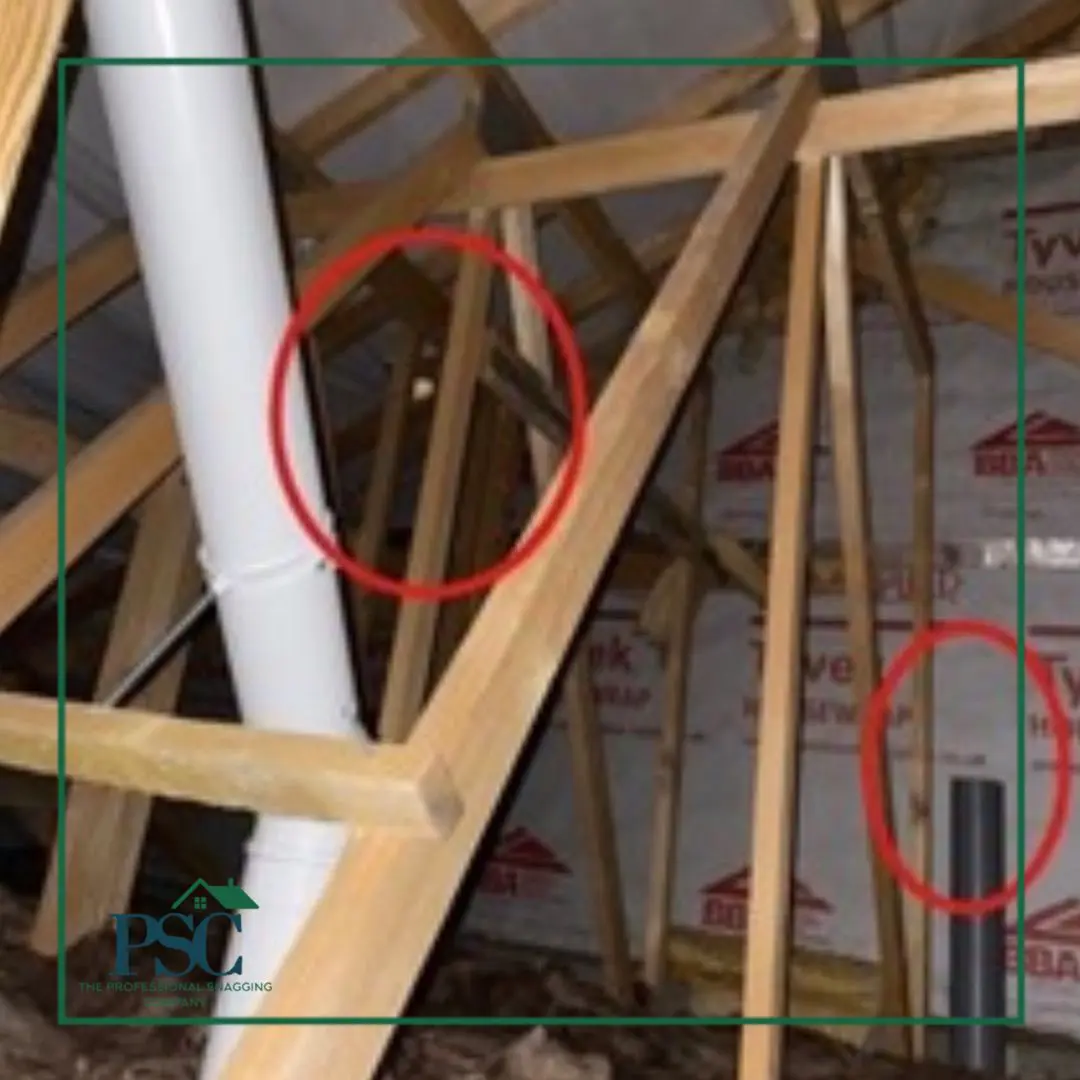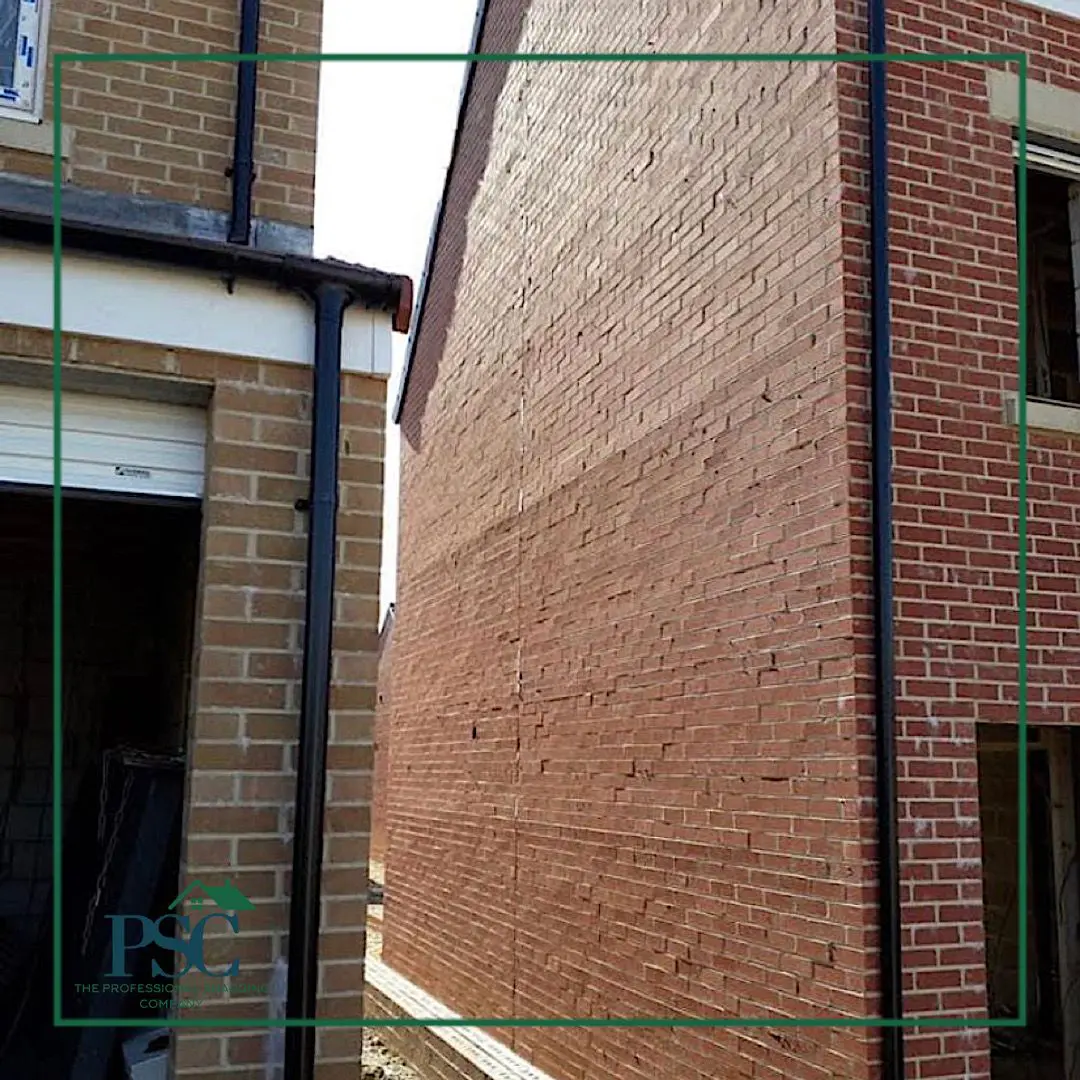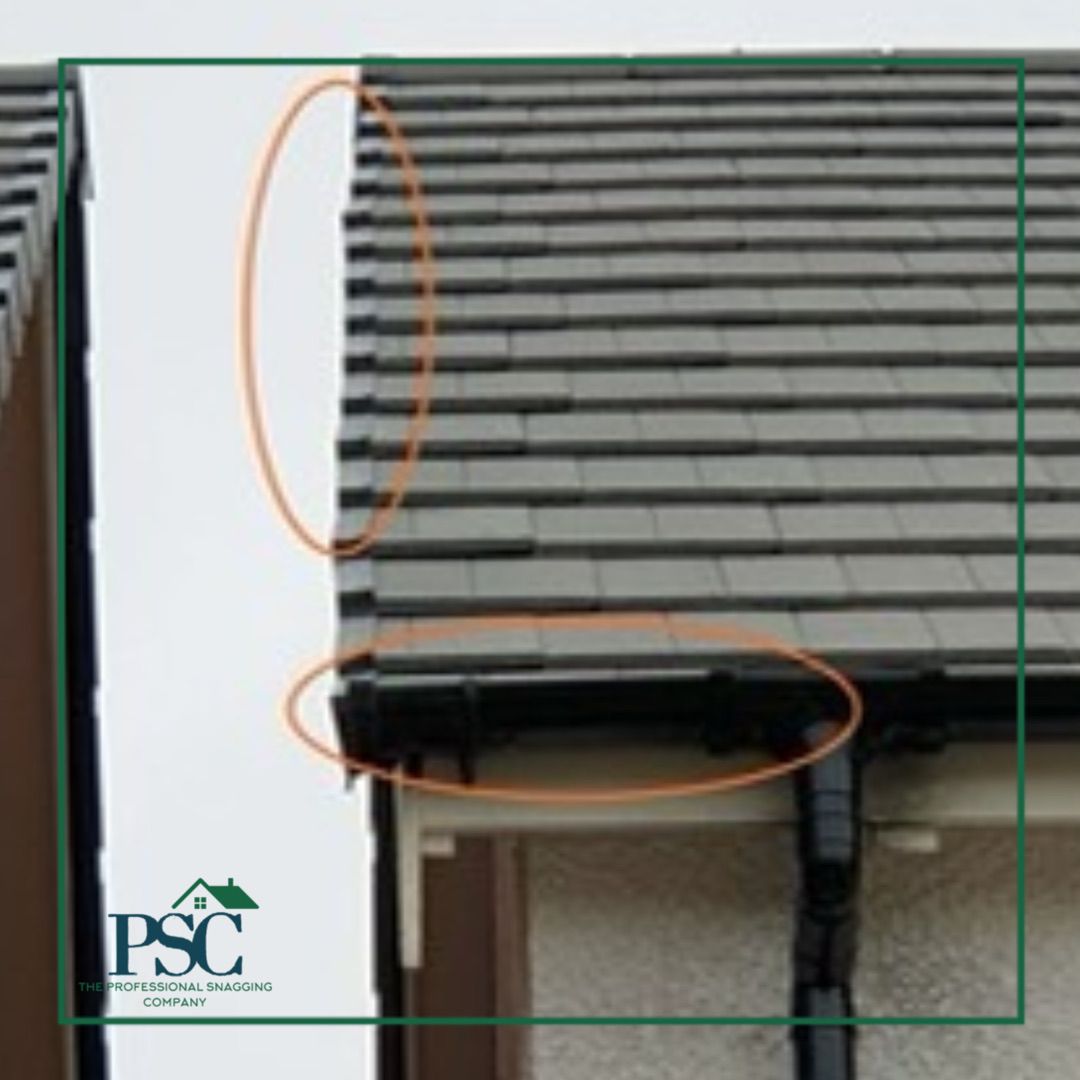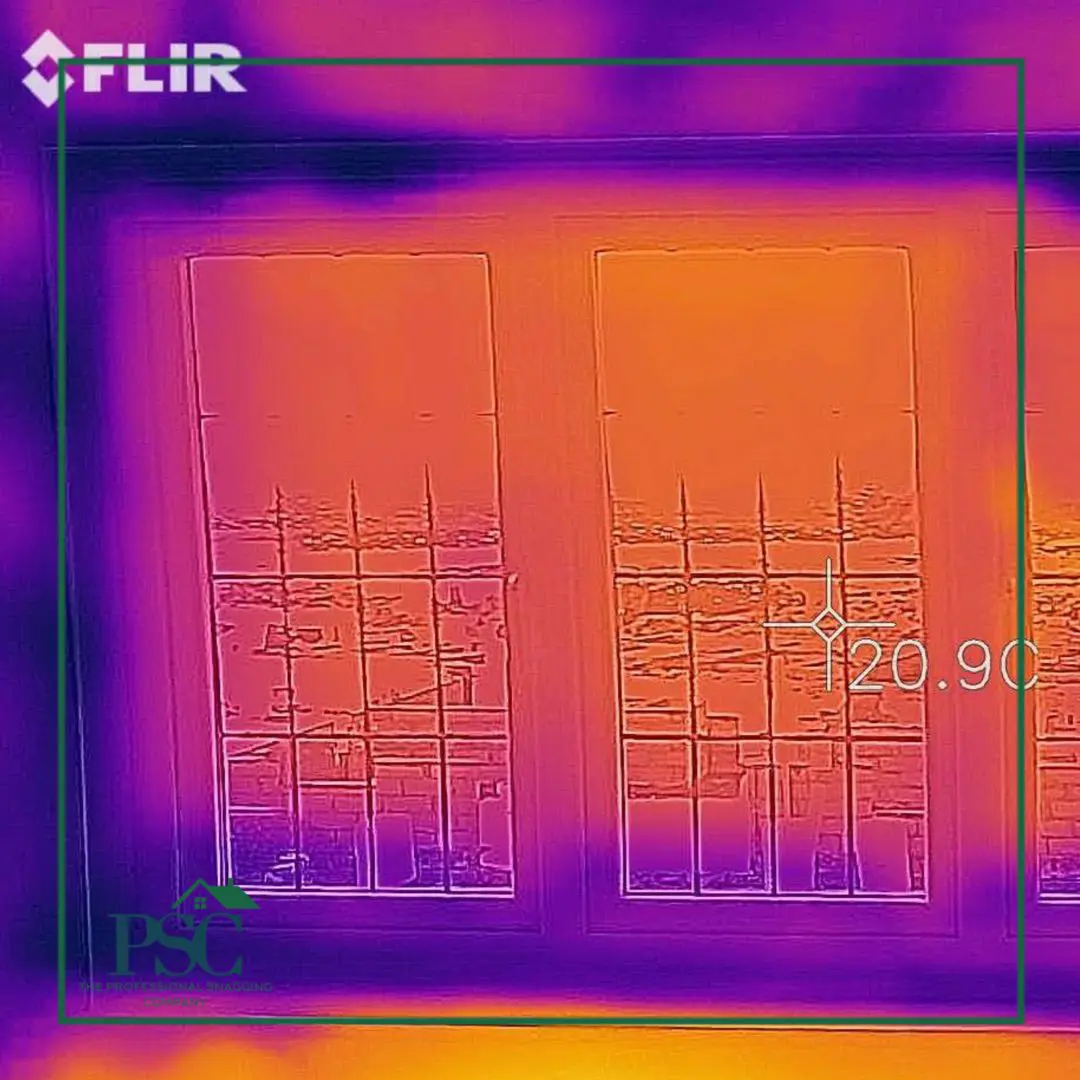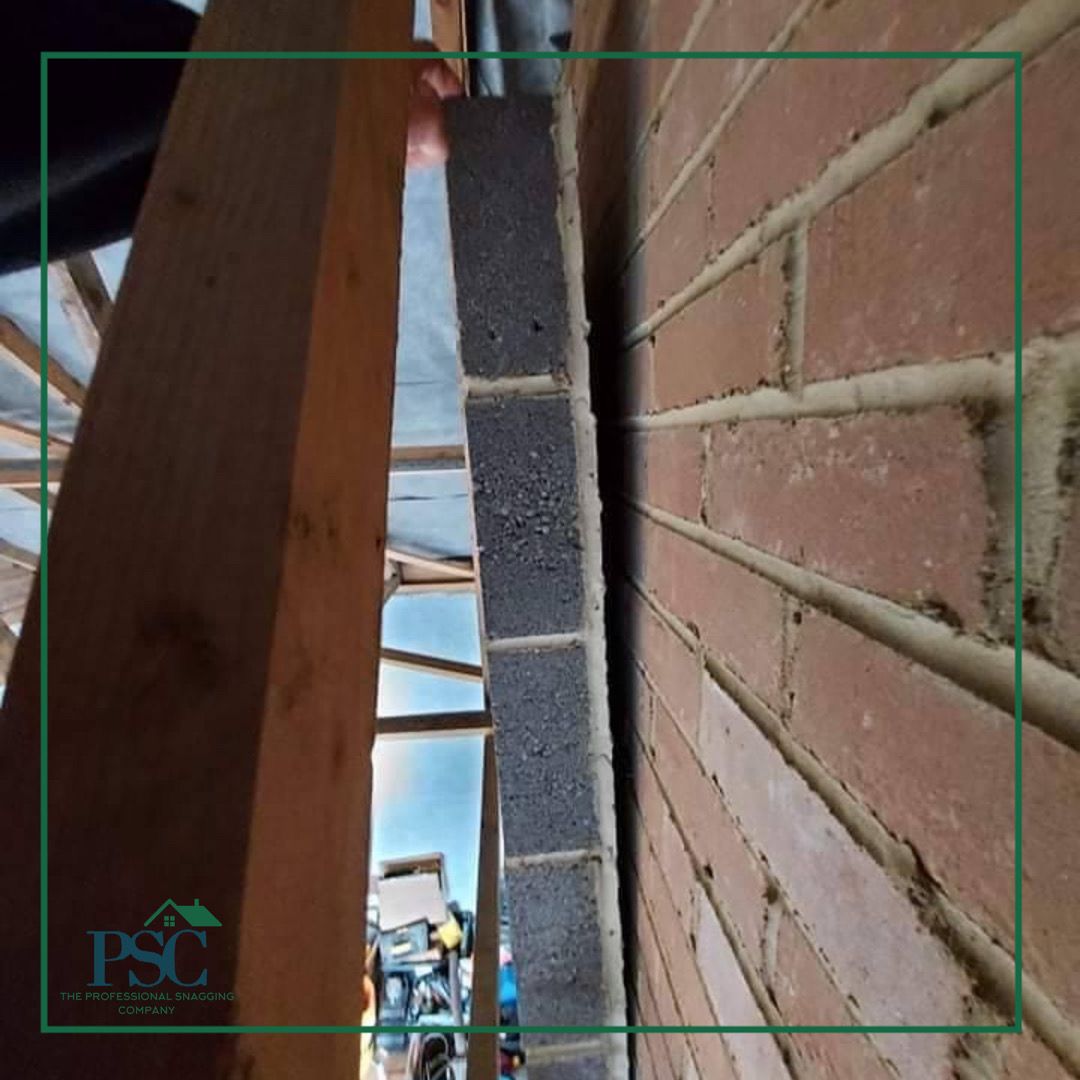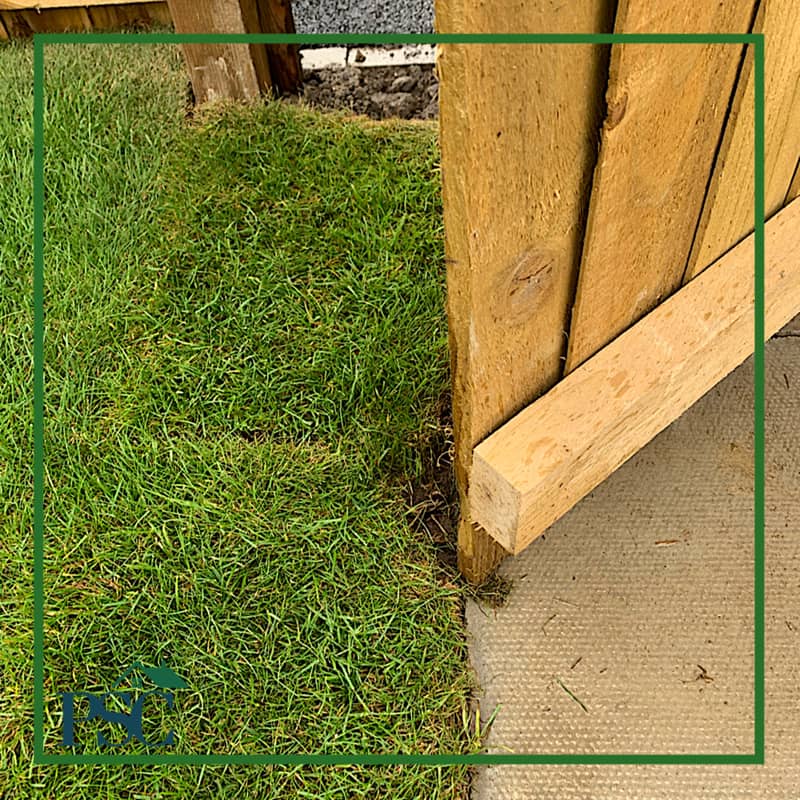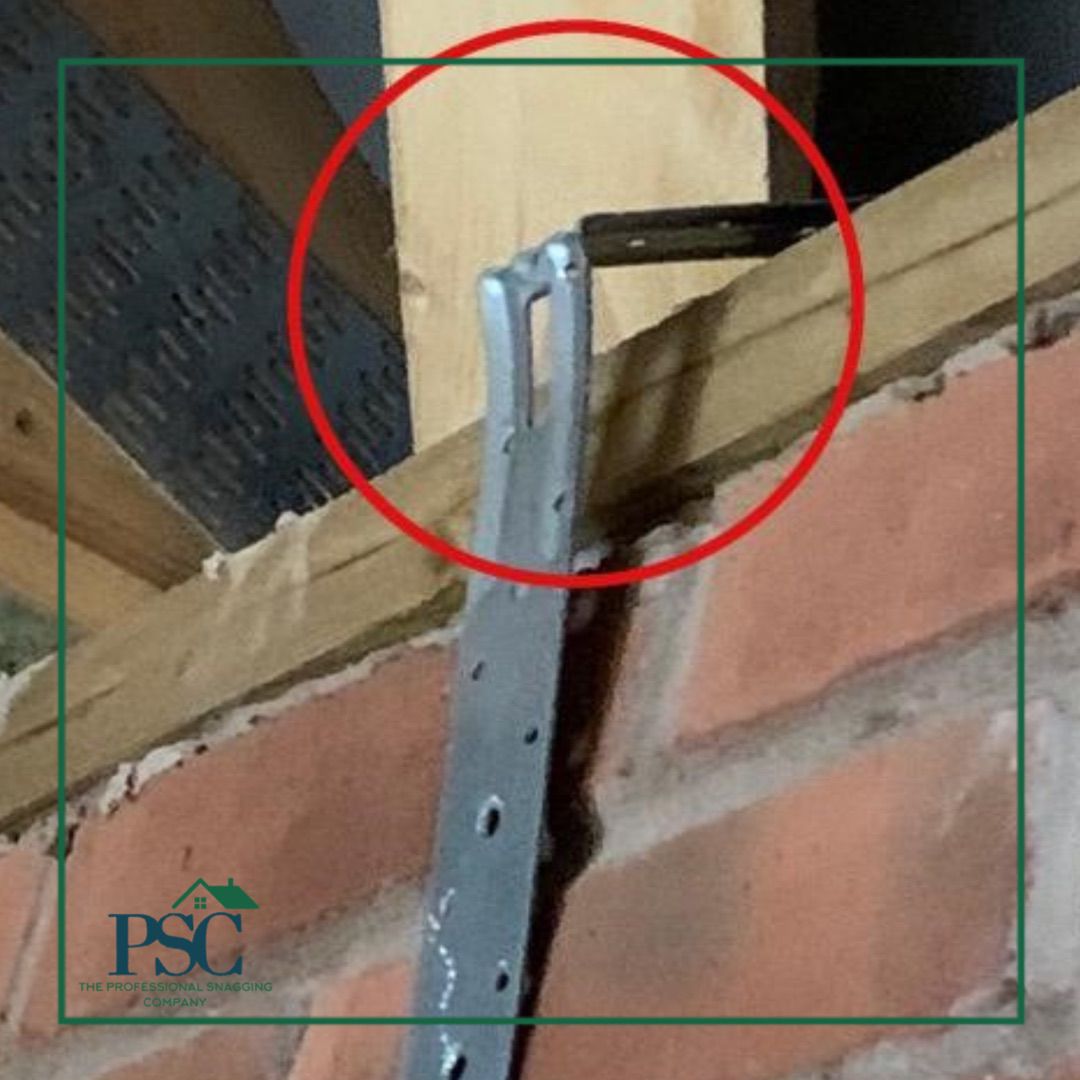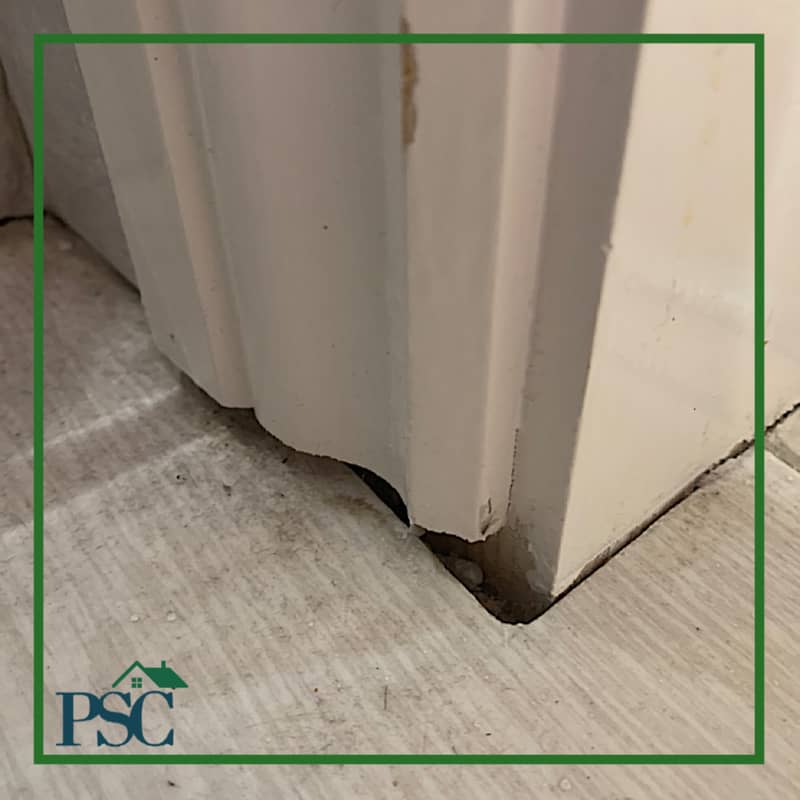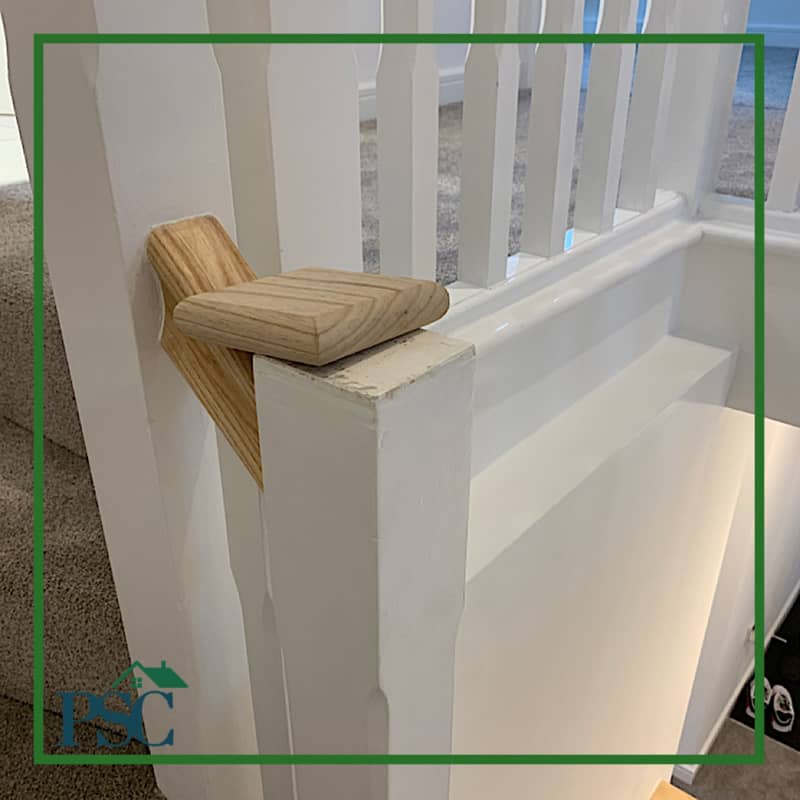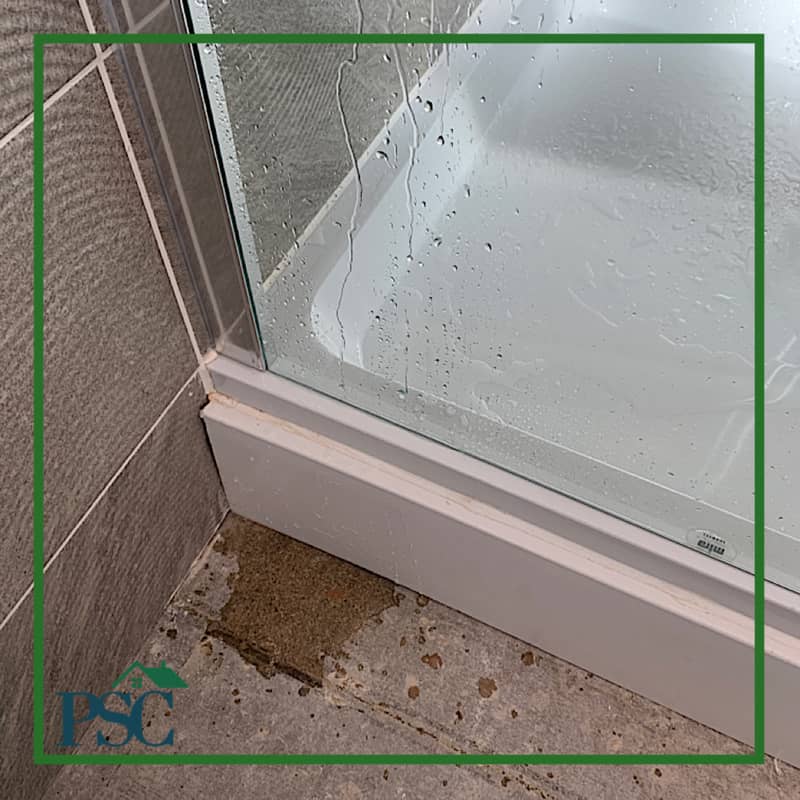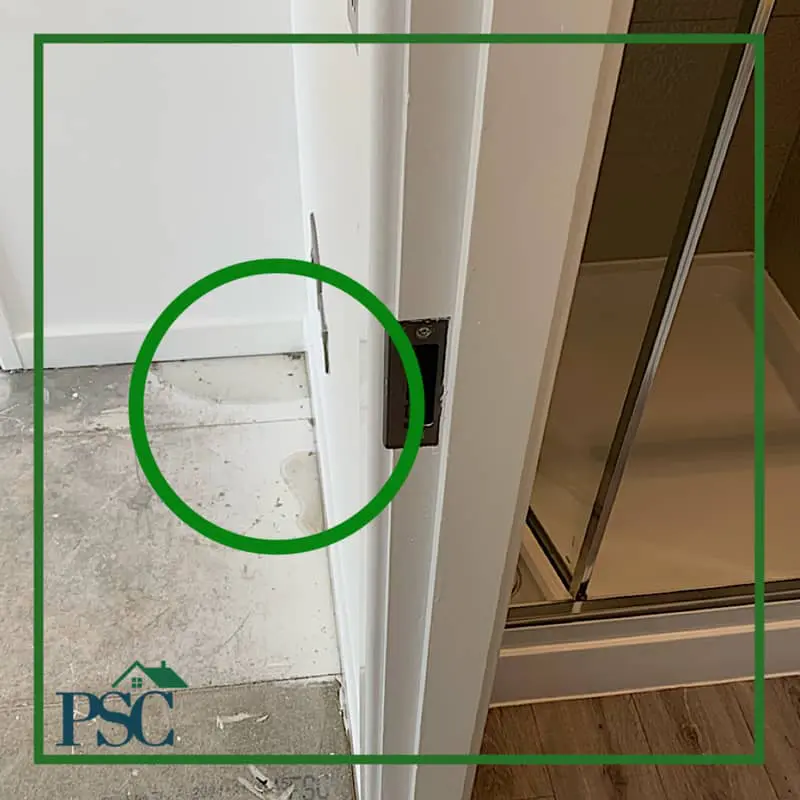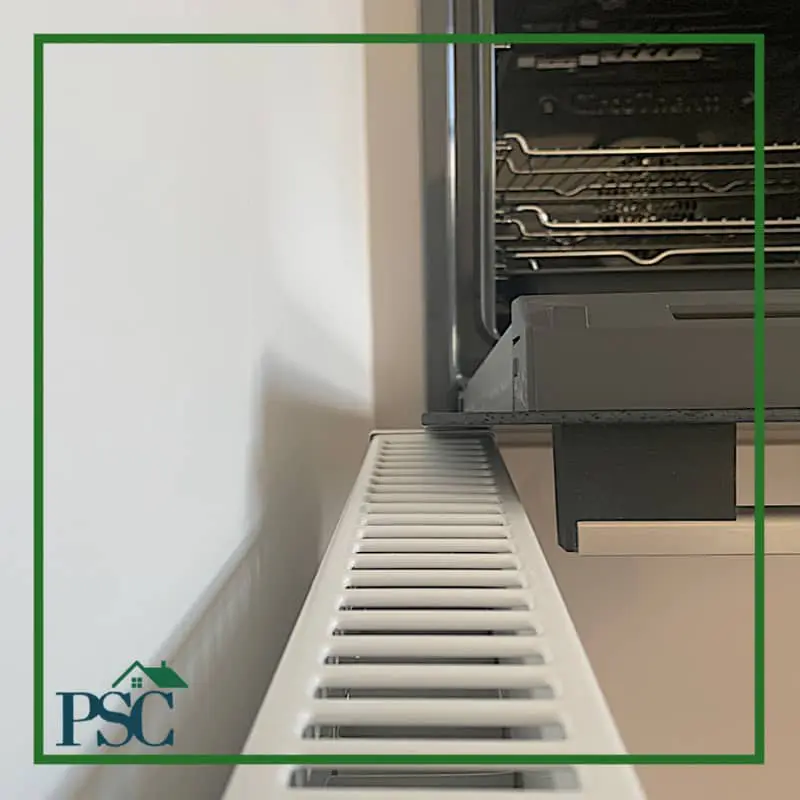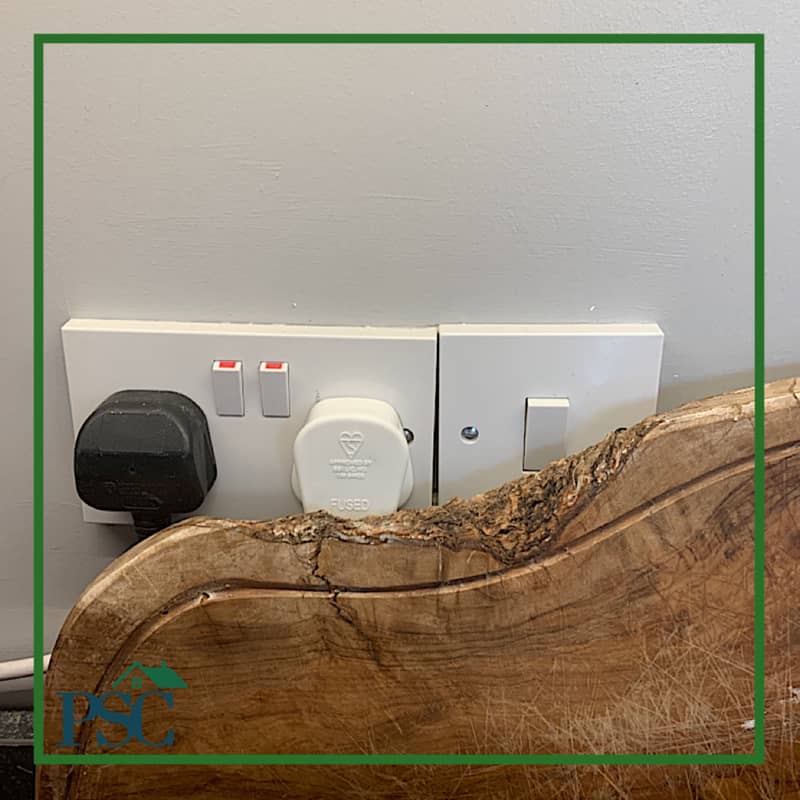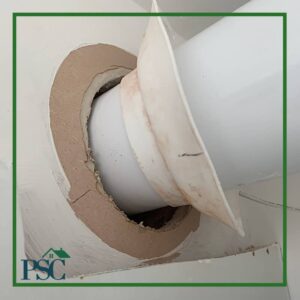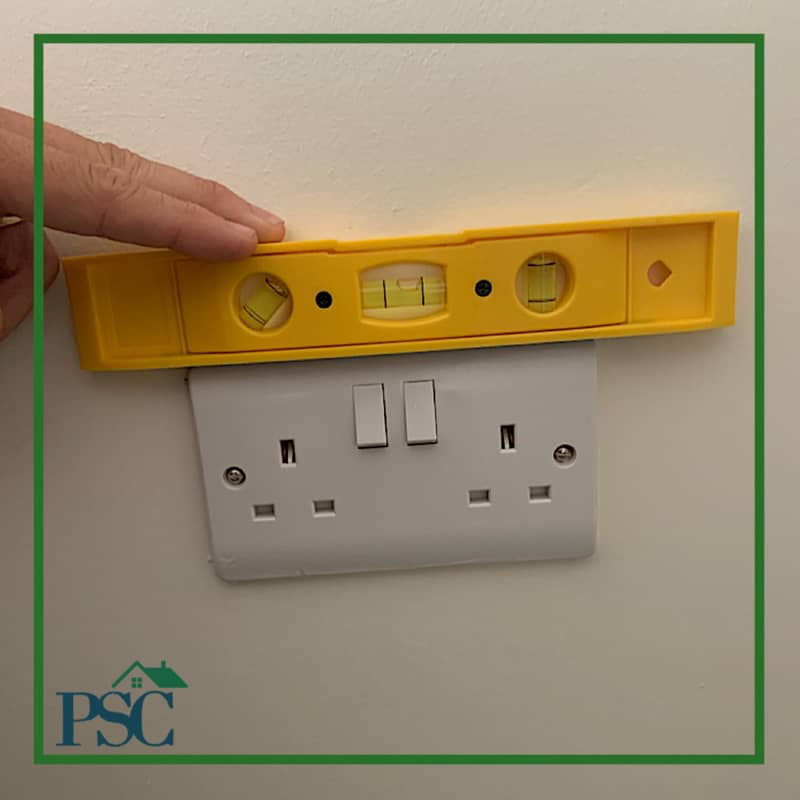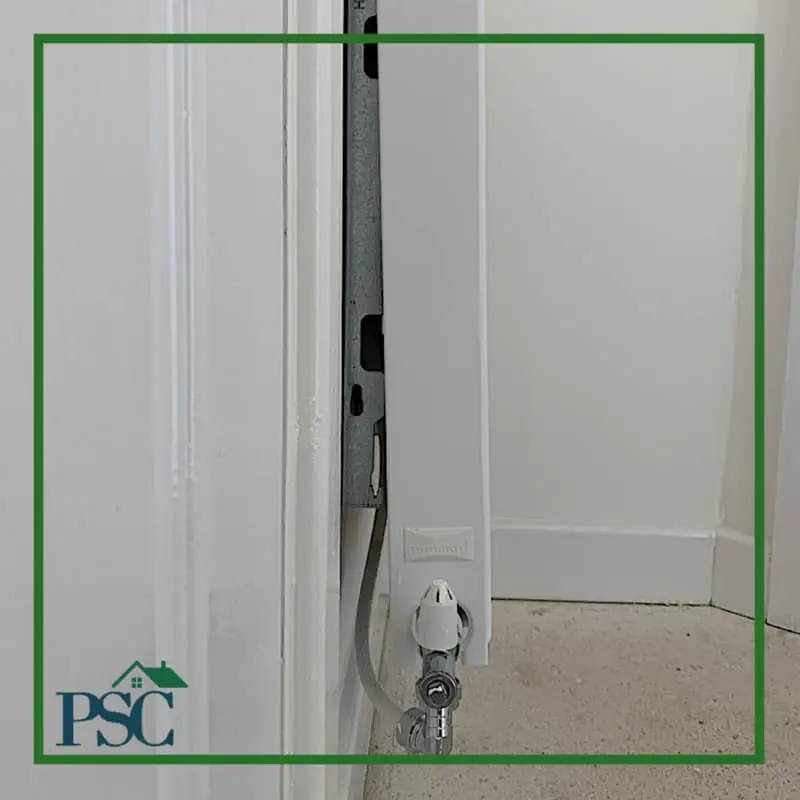
Although most snags tend to be minor and cosmetic, if left alone, cosmetic issues like chips in brickwork and uneven grouting can reduce the structural integrity of a wall. Some of our team of inspectors have also found major snags, which would have failed building regulations.
The main question is, do you feel confident in writing the snagging list yourself?
The best practice is to hire a professional to perform the snagging survey for you as they will have the best knowledge of how to inspect the property and what to look for. However, you can view the property and compile a list of snags yourself, or send someone to do so on your behalf. If you do it yourself, you should also remember to take pictures of any issues you find to support your list.
Regardless of who performs the inspection, these are the things that you should make sure they are looking out for when making the snagging list. This picture has two major snags, which would breach building regulations! The waste pipe finishes without a dergo vent inside the attic and the extractor fan exhaust from the bathroom is not connected; meaning moist steamy air will be pumped into the space which would lead to serious damp and mould issues.
External
Roof
Your tiling should be inspected for any loose or damaged tiles that may have happened as a result of them being installed in a hurry. Even small cracks in tiles can cause problems in the future, so it’s worth making sure they are all straight and undamaged. Damaged tiles is one of the most common snags that our team find, which is why we offer an upgrade to include a drone survey which gives them a much better view of the components of the roof.
Walls
Fences and Gates
Pipes
Cosmetics
Drive
Garage
Wonky Tiles and Misaligned Guttering
These tiles are not fitted properly and neither is the guttering.
Thermal Image Snag of a Very Draughty Window
This is going to make the room very cold as the window has not been fitted properly.
The interior
Attic
Doors
Windows
Stairs
Kitchen
Bathroom
Cosmetics
Interior Fixtures & Fittings
Just like the exterior of your home, you should feel that the inside looks pleasing to you. Make sure that every wall and ceiling has been completely painted and has a smooth even finish. Look out for any cracks in the wall or any areas where paint may have ended up somewhere it shouldn’t be. Check the carpets and floorboards are all laid properly and there are no gaps between the flooring and the wall. You should also have a keen eye on skirting boards, as these can sometimes be loose or poorly fitted. With homes under NHBC warranty, cosmetics should be checked in line with tolerances set out in chapter 9.1 of the standards handbook.
Insulation and heating
Plumbing
Electrics
Conclusion
It is unlikely that you will find snags that aren’t minor or cosmetic issues when you inspect your home, but it is important to check everything to be on the safe side. Though rare, it does happen that builders or construction companies will forget something or not install something properly, and if that happens with your home, it’s better to know as soon as possible before you are out of your warrantee period. Before you are having to deal with the problem. Being thorough with your snagging survey is the best way to feel confident come completion day!
Do remember, if issues persist after completion, your house will still be under warranty which should help you to avoid having to pay for the cost of getting the builders back to fix it.
- Thermal image analysis (optional extra)
- Drone inspection (optional extra)
- Internal Joinery, Woodwork, Ironmongery
- Plastering, Dry Lining, Paintwork Finish
- Application of Sealants, Mastic
- Ceramics, Sanitaryware, Showers and Screens
- Plumbing, Heating and Hot Water Systems
- Electrical Outlets, Switches, Lights and Consumer Units
- Kitchen Appliances, Kitchen Installation, Worktops
- Windows, Glazing, Locks, Cills and Extraction Connections
- Boundaries, Walls, Fencing And Gates
- Soft Landscaping, Turf, Slabs and Retaining Elements
- Driveways, Footpaths Access and Egress
- Brickwork, Masonry, Render, Mortar and Openings
- Guttering, Downpipes and Boiler Outlets
- External Application of Sealants, Mastic
- uPVC Windows and Doors
- Garages, Brickwork, Doors and Slab
- Meter Boxes, Manholes, Inspection Chambers
- Porches, Bays and Canopy
- Roof Tiles, Ridge Tiles, Verge, Eves, Fascia, Soffits and Rafter
Snagging List FAQs
What is a snagging list?
A snagging list is a list of all the defects, faults or poor workmanship found in a new build property. A snag list is normally created by a snagging company on behalf of an owner. A snagging company will conduct a snagging survey on a new build property and publish a report for both the owner and the property developer. This is then used to make sure that the property is finished to a high standard, as a site manager will address the issues found in a snagging inspection by going back into a property and fixing the snags.
Can I add new snags to my snagging list?
What should be included in a snagging checklist?
Here are some ideas of what to include in your snagging checklist. However, knowing what to look for and what it should look like are two very different things. You will be able to give a site manager a more detailed snagging survey if you use a professional snagging company. Never the less, here are a few things you could start to include in your snagging checklist:
- For windows – has all paintwork been finished off, including undersides of sills?
- Is the framework on windows and doors free from damage?
- Is glazing throughout the property free from scratches, paint splashes and cracks?
- Are all sanitary fittings undamaged and clean?
- Are all kitchen units and worktops free from damage?
- Are the doors of cupboards hung correctly?
- Is any floor tiling complete, especially around cupboards, fittings and doorways?
- Is any sheet flooring flat and free from curling edges and bubbling?
- Is the skirting woodwork and paintwork undamaged and free from defects?
- Does the gradient and access of the drive/path allow for clear access?
- Has a top coat been applied to all external painted surfaces; and is the finish to a satisfactory standard?
Should I use a professional snagging inspector?
A professional snagging inspector comes with many benefits and will ensure that the snagging list you submit is comprehensive. Snagging is a complicated task that requires specialist knowledge across many trades. A professional snagger will have industry experience that most new build home buyers don’t have. This means that they will know what to look for and spot issues that would be missed by the untrained eye. If you are asking yourself is a snagging survey worth it? Then you only need to consider the potential costs a home owner will have to pay to fix problems that a professional snagging company will find.
- For windows – has all paintwork been finished off, including undersides of sills?
- Is the framework on windows and doors free from damage?
- Is glazing throughout the property free from scratches, paint splashes and cracks?
- Are all sanitary fittings undamaged and clean?
- Are all kitchen units and worktops free from damage?
- Are the doors of cupboards hung correctly?
- Is any floor tiling complete, especially around cupboards, fittings and doorways?
- Is any sheet flooring flat and free from curling edges and bubbling?
- Is the skirting woodwork and paintwork undamaged and free from defects?
- Does the gradient and access of the drive/path allow for clear access?
- Has a top coat been applied to all external painted surfaces; and is the finish to a satisfactory standard?
Can the developer deny access to the property for snagging?
If you have not completed then legally the property still belongs to the developer. That said you have a legal interest in the property. Due to this your solicitor will be able to arrange access to the property if the developer is proving to be difficult and there is a requirent for all developers to allow a Pre-Completion inspection so that any snags can be resolved before completion while the developers are still onsite. This will apply if your developer is registered with the New Homes Quality Board to allow you to employ someone to carry out a Pre-Completion Inspection.
- For windows – has all paintwork been finished off, including undersides of sills?
- Is the framework on windows and doors free from damage?
- Is glazing throughout the property free from scratches, paint splashes and cracks?
- Are all sanitary fittings undamaged and clean?
- Are all kitchen units and worktops free from damage?
- Are the doors of cupboards hung correctly?
- Is any floor tiling complete, especially around cupboards, fittings and doorways?
- Is any sheet flooring flat and free from curling edges and bubbling?
- Is the skirting woodwork and paintwork undamaged and free from defects?
- Does the gradient and access of the drive/path allow for clear access?
- Has a top coat been applied to all external painted surfaces; and is the finish to a satisfactory standard?

